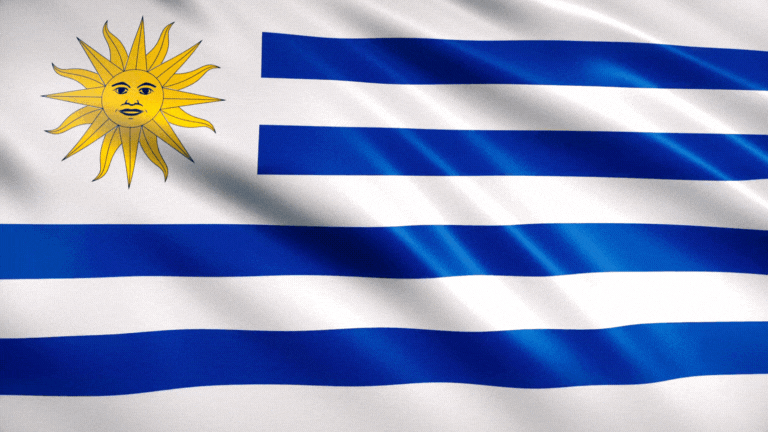Please be aware that this article may contain links to products and services we recommend. If you click on any of these links, we may earn a commission at no extra cost to you. We only endorse products and services that we believe will add value to our readers. Learn more here.
Uruguay Flag: History & Symbolism
Hack The Quiz
7/4/20243 min read
This article explores the history and symbolism of the Uruguay flag, highlighting Uruguay’s location in South America and explaining how the flag’s design reflects the country’s independence, cultural heritage, and commitment to liberty.
Where is Uruguay?
Uruguay is located in South America, bordered by Brazil to the north, Argentina to the west, and the Atlantic Ocean to the southeast. It is known for its scenic coastlines, rolling plains, and vibrant culture. Uruguay has a rich history influenced by European settlers, especially Spain, which has shaped much of its culture and identity.
Uruguay gained independence from both Spain and Brazil on August 25, 1825, after a series of conflicts, and the national flag was adopted soon after. The flag symbolizes the country’s independence, cultural pride, and bright outlook.
The History of the Uruguay Flag
The flag of Uruguay was officially adopted on July 11, 1830, following the country’s declaration of independence from Brazil. The design was inspired by the flag of Argentina and the United States, incorporating elements meant to reflect the country's newly established sovereignty and its commitment to liberty.
Initially, the flag had nineteen stripes representing the nineteen departments of Uruguay, but this was later reduced to nine stripes to improve the flag’s visual balance. The nine stripes now symbolize the original nine political divisions of the country, and the Sun of May, a national emblem, was added to reflect Uruguay's historical ties with the rest of South America’s independence movements.
Breaking Down the Uruguay Flag’s Design
The flag of Uruguay features nine alternating white and blue horizontal stripes, with a golden sun in the top left corner on a white field. Each element of the flag carries significant meaning tied to Uruguay’s history, culture, and aspirations.
Let’s break down the elements of the flag:
The Nine Stripes
The nine horizontal stripes alternate between white and blue, symbolizing the original nine departments that Uruguay was divided into at the time of independence. The stripes also reflect the nation’s values of freedom and equality.
The Blue Stripes
The blue stripes represent the sky and the water, both important to the country's geography and culture. They reflect Uruguay’s coastal location along the Atlantic and its connection to the Río de la Plata.
The White Stripes
The white stripes symbolize peace and unity among the Uruguayan people, highlighting the country’s desire for harmony and justice.
The Sun of May
The Sun of May is a prominent symbol in the upper left corner of the flag. It represents freedom and independence and is inspired by a symbol often used in South American revolutionary movements. The sun has sixteen rays—eight straight and eight wavy—symbolizing the glory of Uruguay’s hard-won independence from colonial rule. The Sun of May also reflects cultural ties to the rest of the Río de la Plata region, particularly Argentina.
Final Thoughts
The flag of Uruguay is a meaningful symbol of the country’s journey toward independence, its connection to natural elements like the sky and water, and its commitment to liberty. The alternating blue and white stripes represent the country’s original nine departments and the values of freedom and unity, while the Sun of May emphasizes Uruguay's pride in its independence and cultural heritage.
Since its adoption in 1830, the flag has become an enduring emblem of national pride, flown during important events such as Independence Day on August 25 and other national celebrations. It serves as a reminder of Uruguay's enduring spirit, its peaceful aspirations, and its place among the independent nations of South America.
Expand your mind ...
Explore trivia that broadens your understanding and knowledge of the world.
WE ARE HERE FOR YOU
JOIN US and hack the quiz
info@hackthequiz.com
© 2024. All rights reserved.



